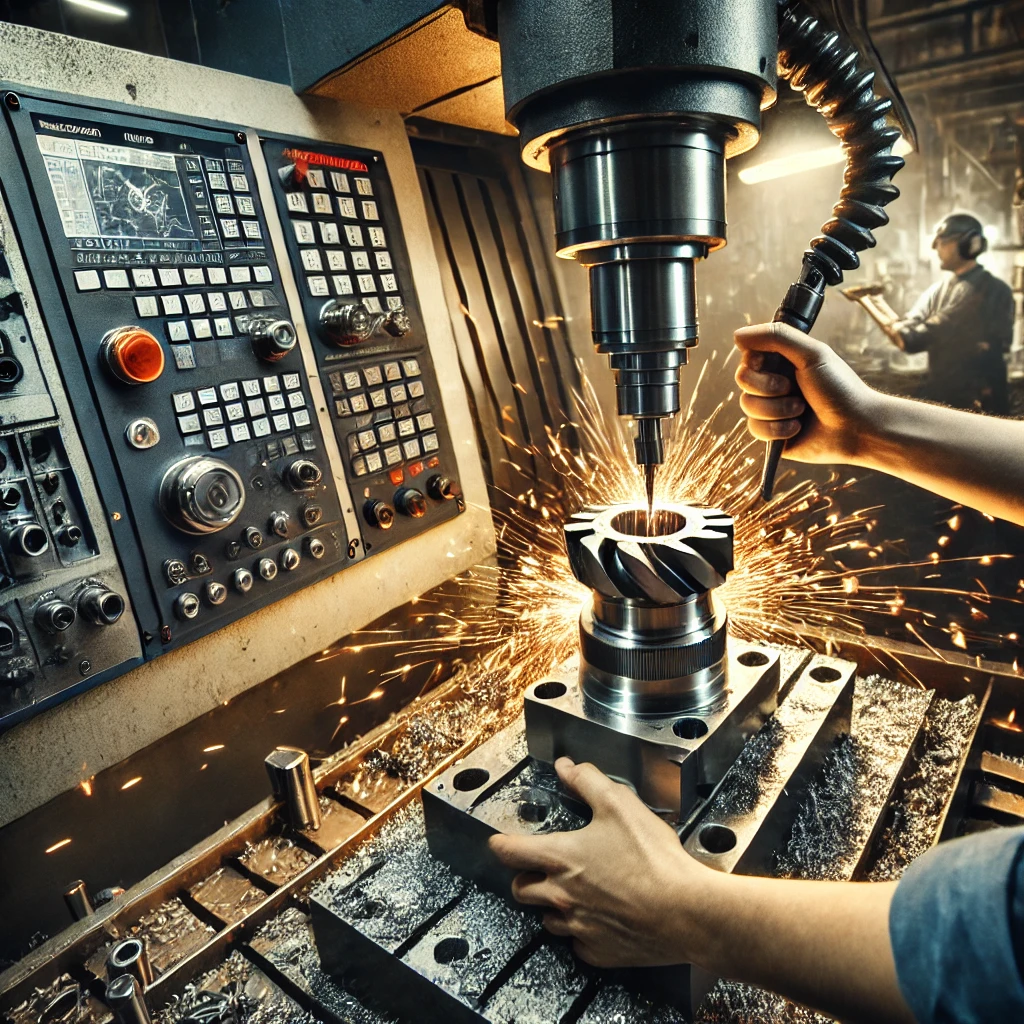13/07/2024
What are the effects of Cutting Carbide Tools on increasing productivity in CNC machines?
The use of cutting carbide tools in CNC machines significantly enhances productivity through both technical and financial benefits. Here’s a detailed explanation:
Technical Advantages
- High Cutting Speeds and Feeds:
- Increased Cutting Speeds: Carbide tools can operate at much higher speeds than high-speed steel (HSS) tools, enabling faster material removal rates. This reduces cycle times and increases the number of parts produced per hour.
- Higher Feed Rates: With the ability to withstand higher feed rates, carbide tools allow for quicker material engagement, leading to shorter machining times for each part.
- Durability and Wear Resistance:
- Longer Tool Life: Carbide tools are significantly harder and more wear-resistant than HSS tools. This longevity means less frequent tool changes, reducing downtime and increasing overall machine utilization.
- Resistance to Heat: Carbide’s ability to retain hardness at high temperatures allows for continuous operation under high-speed conditions without tool degradation.
- Precision and Surface Finish:
- Improved Accuracy: The rigidity and stability of carbide tools lead to higher precision in machining operations. This is critical for maintaining tight tolerances and producing high-quality parts.
- Better Surface Finish: The superior cutting edge of carbide tools results in smoother finishes, reducing the need for additional finishing processes like grinding or polishing.
- Versatility:
- Material Compatibility: Carbide tools can efficiently cut a wide range of materials, including hard metals like stainless steel, titanium, and hardened alloys. This versatility reduces the need for multiple tool types and simplifies tool management.
Financial Advantages
- Reduced Tooling Costs:
- Extended Tool Life: Although carbide tools are initially more expensive than HSS tools, their longer lifespan results in fewer replacements and lower overall tooling costs over time.
- Minimized Downtime: Less frequent tool changes and machine stoppages translate to higher productivity and better use of machine time, leading to cost savings.
- Increased Production Efficiency:
- Higher Output: The ability to run at higher speeds and feeds means more parts can be produced in a given time frame. This increased output directly translates to higher revenue potential.
- Shorter Lead Times: Faster machining processes reduce lead times for orders, improving customer satisfaction and potentially increasing order volumes.
- Lower Operating Costs:
- Energy Efficiency: Shorter machining times and fewer tool changes mean CNC machines spend less time idling, which can reduce energy consumption and associated costs.
- Labor Savings: Reduced need for tool changes and adjustments allows operators to focus on other tasks, improving overall shop floor efficiency and reducing labor costs.
- Quality and Reduced Scrap Rates:
- Consistent Quality: The precision and stability of carbide tools lead to consistent part quality, reducing the incidence of rework and scrap. This consistency ensures that more parts meet specifications the first time, reducing material waste and associated costs.
- Customer Satisfaction: High-quality parts produced efficiently can lead to improved customer satisfaction and repeat business, enhancing the financial stability and growth prospects of the company.
Long-term Benefits
- Sustainability:
- Reduced Waste: Higher efficiency and precision mean less material waste, contributing to more sustainable manufacturing practices.
- Energy Savings: Efficient machining processes lead to lower energy consumption, aligning with green manufacturing goals and potentially reducing energy costs.
- Competitive Advantage:
- Technological Leadership: Utilizing advanced tooling like carbide tools positions a company as a leader in technological adoption, enhancing its competitive edge in the market.
- Market Responsiveness: The ability to produce high-quality parts quickly allows for greater responsiveness to market demands and customer needs.
In summary, the use of cutting carbide tools in CNC machines significantly boosts productivity through technical enhancements like higher cutting speeds, precision, and durability, as well as financial benefits such as reduced tooling costs, increased production efficiency, and improved part quality. These advantages collectively contribute to higher profitability and a stronger competitive position for manufacturers.


